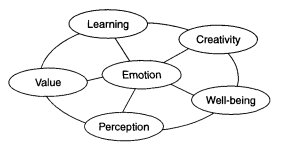In this chapter, only the main steps of the methodologies were dealt with. This is because the appropriate substeps often include the use of sophisticated statistical, mathematical and economic tools and models, discussion of which is outside the scope of this book.
Of the many systems methodologies available, some clearly work well in certain situations but not in others. Naturally, each has its strengths and inevitable limitations. As a rough guide on how to choose the most suitable, the division between hard methodologies and soft methodologies made by Peter Checkland (1981) is a useful starting point.
Soft methodologies are used in the absence of a concrete definition of ill- structured problems in which objectives and purposes are themselves often problematic. Such problems mainly exist in connection with various kinds of social systems and cannot be given an exact form or be forced into a predetermined structure. They are multivariate problems to be dissolved rather than solved. Soft methodologies are characterized by mutual understanding and the generation of learning. Thus, it takes a more behavioural, humanistic approach with the aim of guiding intervention or change in human organisations, allowing inquiry into the problem situation and encouraging discussion and debate. The role of human emotions is emphasized. In Figure 11.4, the main interconnected concepts of soft methodologies are presented. Typical soft system methodologies presented here are Systems design and Breakthrough thinking.
Hard methodologies are goal-oriented in the solution of structured problems where well-defined objectives and constraints exist. They start with a concrete problem, follows a linear sequential process, and ends with the problem being solved. The problem is obvious, determined and can be solved by using the existing knowledge base. Normally these methods use some kind of means-end analysis. They work according to the implicit belief that any problem can be solved by setting objectives and finding optimal satisfying alternatives directed towards a defined problem solution. Identifying, designing, and implementing are the main phases of this approach. Systems analysis, systems engineering, and GLS simulation have been chosen as examples here.

Figure 11.4 The interconnection of main concepts in soft methodologies.
Finally, from the plethora of existing systems methodologies the following are well-known and therefore deserve to be mentioned, even though they are not considered here, as they are more specialized.
- Checkland’s own Soft Systems Methodology, SSM (Checkland 1981)
- Total Systems Intervention, TSI (Flood and Jackson 1991)
- Strategic Assumption Surfacing and Testing, SAST (Mason and Mitroff 1981)
- Critical Systems Heuristics, CSH (Ulrich 1983)
- Scenario techniques (von Reibnitz 1988)
An overall examination of the existing systems methodologies indicates that most of them are partitioned into about a half a dozen steps, while some of them distinguish up to ten steps. The steps and phases are sometimes mixed, both logically and chronologically. Kjell Samuelson (1976) has compiled a list of 45 logical/chronological steps that can be distinguished in various methodologies, although they sometimes overlap. It has the following form:
- Ultimate objectives
- Goals statement
- Constraints
- Needs and requirements
- Definition of project or problem
- Idea and inception
- Conception (or conceiving of solutions)
- Conceptual design with functional model
- Feasibility study (impact declaration)
- General systems proposal and masterplan
- Object system analysis (and description)
- Observation of existing systems
- Alternative designs outlined
- Identifying alternative technologies
- Preliminaries (survey, analysis, design)
- Design evaluation
- Specifications
- Information system macrostructuring
- Information study (e.g. precedence analysis)
- Processing study
- Details study
- Decision analysis
- Data analysis
- Data construction and microstructuring
- File structuring
- Component design
- Simulation
- Conversion
- Pilot system (experiment)
- Pilot evaluation (empirical testing)
- Selection of sysfem
- Implementing (and programming)
- Installation
- Testing
- Evaluation
- Operation
- Training
- Maintenance
- Organizing production resources
- Management of production resources
- Product distribution
- Disposition of waste
- Result reporting and follow-up review
- Redesign
- Cessation
Source: Skyttner Lars (2006), General Systems Theory: Problems, Perspectives, Practice, Wspc, 2nd Edition.
